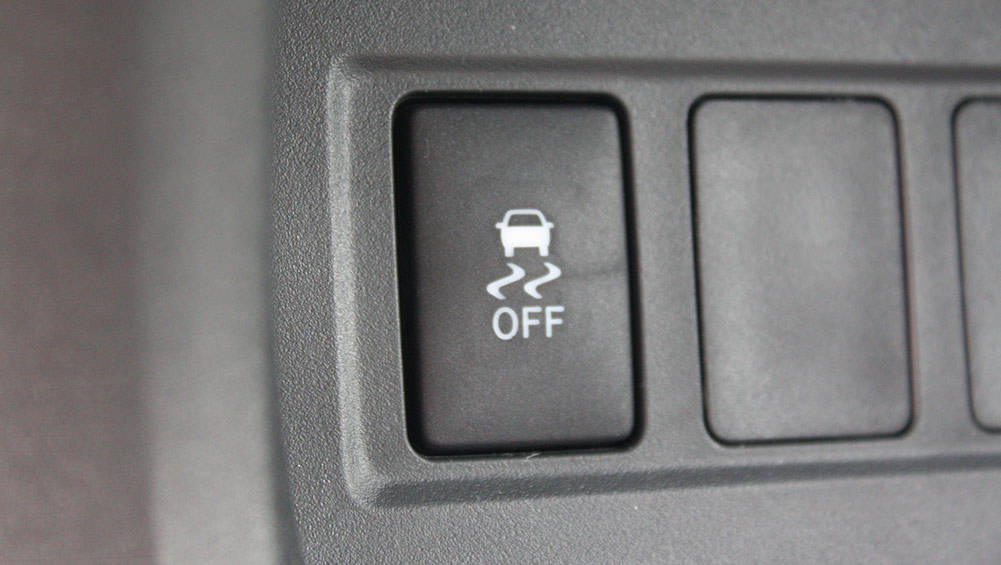
Electronic Stability Control (ESC) is available on many new cars. Of course, if safety officials get their way, it will be on all vehicles very soon. This technology has proven to be a great help to drivers. That is especially true for those who need to maintain control of their vehicles during extreme steering maneuvers. ESC helps to keep the vehicle headed in the driver’s intended direction, even when the vehicle meets or exceeds road traction limits.
Sometimes a driver will attempt an extreme maneuver to avoid a crash, or because they misjudge a curve. They may see their vehicle-handling abilities stretched to its limits. When their vehicle has reached its limit with regard to road traction, the driver may lose control and “spin-out.” In other cases, the front of the vehicle may “plow out.” (Both are explained below.) While a professional driver with sufficient road traction could potentially maintain control during an extreme maneuver by using various techniques like counter-steering, which means momentarily turning away from the intended direction. Since an average driver won’t know how to properly apply counter-steering to regain vehicle control, ESC is useful for keeping everyone on the road safe.
What is “Spinning Out”?
When a vehicle has entered a curve that is too extreme for the speed the driver is traveling, the rear of an ESC-equipped car begins to slide, or “spin out,” also known as “oversteering.” The ESC system will immediately detect that the vehicle’s direction is changing. If the change is quicker than appropriate for the driver’s intended direction, the ESC will momentarily apply the right front brake to move the direction of the vehicle back to the driver’s intended path.
What is “Plowing Out”?
When an ESC-equipped vehicle is making a sharp turn and the vehicle’s road traction has neared its end, the front of the vehicle will begin to slide in a different way, known as “plowing out,” also known as “understeering”. The ESC system will immediately detect that the vehicle’s direction is changing less quickly than appropriate for the driver’s intended direction, and it will momentarily apply the left rear brake to alter the direction of the vehicle back to the correct path. However, a non-ESC equipped vehicle will continue to plow out and run off of the road.
How Does Electronic Stability Control Work?
ESC systems exist under many trade names, including Vehicle Stability Control (VSC), Electronic Stability Program (ESP), and Vehicle Stability Enhancement (VSE). However, they all have essentially the same function. ESC systems use automatic braking of individual wheels to prevent the heading from changing either too quickly and spinning out, or not quickly enough and plowing out.
It is true that ESC systems cannot increase available traction. However, it does maximize the possibility of keeping the vehicle under control and on the road safely. When a driver engages in an extreme maneuver for whatever reason, ESC uses the driver’s natural reaction of steering in the intended direction. ESC happens so quickly that drivers do not perceive the need for steering corrections. If drivers do brake because the curve is more or less sharp than anticipated, the system is still capable of generating uneven braking if necessary to correct the heading.
ESC Systems Will Eventually be Everywhere
The use of ESC systems has been so successful, the National Highway Traffic Safety Administration (NHTSA) has developed a comprehensive plan to include these systems on many more new vehicles. The ESC systems support the driver in nearly all critical driving situations, and it uses the functions of both the antilock braking system (ABS) and the traction control system, although it can do a lot more. ESC systems detect vehicle skidding movements and actively counteract them.
The NHTSA recently established the Federal Motor Vehicle Safety Standard (FMVSS) No. 126 (49 CFR Parts 571 & 585126). This standard requires ESC systems on passenger cars, multipurpose passenger vehicles, trucks, and buses with a gross vehicle weight rating of 10,000 pounds or less. As a result of this standard, the NHTSA estimates ESC will reduce single-vehicle crashes of passenger cars by 34%. At the same time, single-vehicle SUV crashes will drop by 59%. And with the massive reduction in rollover crashes, NHTSA estimates ESC will save 5,300 to 9,600 lives annually. It could also prevent 156,000 to 238,000 injuries every year. Those positive results will be in effect once every light vehicle on the road has been equipped with ESC. (Source)
